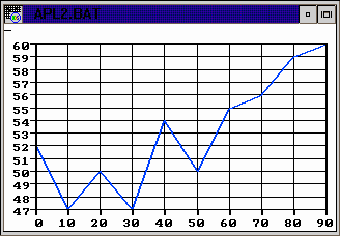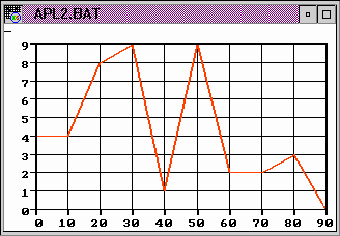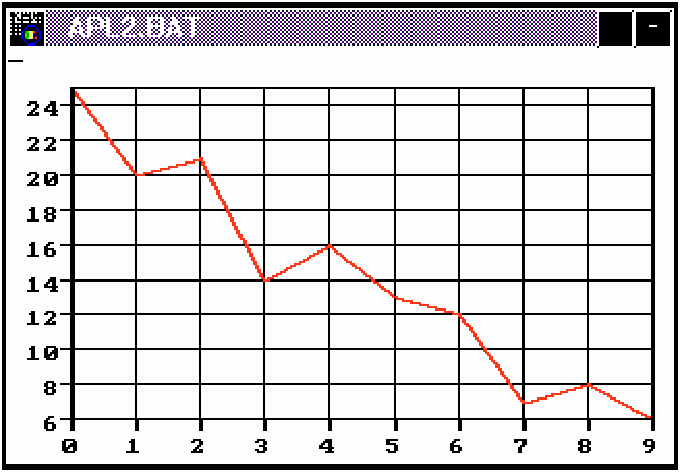
Manuel Alfonseca
This paper is an extension to the University end-of-year lecture, forwarded by the author in July, 1998.
Although the word "myth" does not necessarily carry a connotation of falsehood, it is frequently attached to it. I am using the word in one of its classic meanings, as a synonym of "legend", "fiction", "fable", rather than the most recent that makes mythical an unnecessary synonym of "famous".
The goal of Science has always been (at least in theory) the discovery of truth. The use of the word "myth" in a relation to Science may seem surprising, but human beings have an endless capacity to create and maintain myths. In fact, to be strict, the ideas mentioned in this paper have originated in peripheral disciplines, such as History or Philosophy of Science, and are not, properly speaking, scientific myths.
The myth of Indefinite Progress can be summarized thus: Once we have entered the age of Science, scientific development cannot regress. Inventions and discoveries will follow one another at an always increasing rhythm, and the curve of scientific development should be approximately exponential.
Before trying to refute this theory, let us take a look at a few other myths which still survive in spite of their evident falseness.
Most informed people know that this statement is false, but many common people still believe it. Writing about this myth, Isaac Asimov said: "Columbus really proved that, if you are lucky, it doesn't matter how wrong you are".
As every educated person in the Middle Ages and Antiquity, Columbus knew that the Earth is a sphere, but he estimated its circumference at 25000 km, against the Portuguese geographers, who thought 40000 a nearer value. (Of course, they didn't measure in km.) He thought that the western way to the Indias would be much shorter than the eastern, with a known length of about 20000 km. The Portuguese rejected his offer because a 20000 km voyage without stopovers was too much for the nautical state of the art at the time. Columbus tried his plan anyway with the help of Spain and had the luck to find a new continent at his predicted distance. He always thought he had proved his theories, but the Portuguese geographers were right, after all.
The fact that the Earth is round was common knowledge several centuries before Christ. Aristotle (384-322 B.C.) used three main arguments to prove it:
Eratostenes of Cyrene (276-194 B.C.) went further. Using the different angles of the Sun rays during the summer solstice in two Egyptian locations (Siene and Alexandria) he estimated the length of the Earth's circumference as 25000 stadions (39000 to 45000 km). The actual value is 40000 km. Eratostenes computations were the reason why the Portuguese geographers rejected Columbus plans.
During the Middle Ages, only ignorant people believed that the Earth was flat, with a border where ships could fall. In The Divine Comedy, Dante assumes as a well-known fact that the Earth is round. He locates Purgatory in an island at the Antipodes of Jerusalem. Hell is a cone with its vertex at the center of the Earth. When Dante and Virgil arrive there, a surprising science-fiction effect is introduced: to pass to the other hemisphere, they must descend holding to Satan's hairs. At the exact center, however, they must turn around and start climbing, for the direction of gravity has inverted.
This legend is believed by some educated people. In fact, both are equally false.
Two centuries before Christ, Archimed (287-212 B.C.) wrote a book, The Arenarius, where he computes the number of particles in the universe and the distance to the stars (all the stars were assumed to be at the same distance). To work with very large numbers, he had to develop his own number system. In our own units, the result is shockingly exact: the distance to the stars he got is equivalent to about one light-year. The nearest star (alfa-Centaur C) is at 4.27 light-years, which means that Archimed, in his first attempt, got the order of magnitude right.
Archimed computations were common knowledge. Claudius Ptolemy (100-170 A.D.) wrote in He Mathematik Syntaxis (better known by its Arab name, Almagest): Compared to the distance of the fixed stars, the Earth has no appreciable size and should be considered as a mathematical point (Book I, Chapter 5). Almagest was the standard textbook in Astronomy during the Middle Ages. Therefore, the myth is clearly false.
This myth is generally believed, even by scientists or historians. In fact, all antique or medieval references disconfirm it. Contempt towards the Earth and the activities of its inhabitants appears everywhere in the literature. Let us look at a few examples:
Col viso ritornai per tutte quante
le sette spere, e vidi questo globo
tal, ch'io sorrisi del suo vil sembiante.
Dante's cosmos has a dual structure: in the material world (Ptolemy's nine spheres plus the Earth), a body is less important the nearer the center. The Earth, therefore, has the least importance. In the dual world of the Empireon (God's abode), the center (God) is the most important, while the importance of the nine spheres around Him (corresponding to the nine angelic species) grows towards the center.
Science cannot prove any of those things. They are outside the scientific method. This myth has been spread by religiously opposed people and is none other than wishful thinking.
In 1917, a sampling of the prevalence of religious beliefs among scientists gave a result of about 50%. Commentators predicted the disappearance of all religious beliefs in this section of the population during the twentieth century.
In 1997, eighty years later, a new sampling was performed, with more or less the same results: about 50% of scientists are still believers. The 1917 prediction has failed. However, analyzers still say that the new results predict the future disappearance of all religious beliefs among scientists during the twenty-first century. What they really prove is that man can fall twice in the same trap.
A 50% division of opinions in a non-scientific question seems a reasonable, even predictable result.
This myth has been broadly publicized with the help of the Dale Carnegie foundation and such spectacular sponsors as Albert Einstein. It declares that our brain is underused and capable of performing ten times better than normal, which gives food to advocators of occult human potentialities, such as telepathy, clairvoyance or psychokinesia.
The myth appeared as the result of a misunderstanding. During the thirties, neurologists discovered that the species with the most complex nervous systems (man, among others) dedicate less proportion of brain mass to sensory-motor functions. They applied the name silent cortex to the areas responsible for other activities, such as language and abstract thought. The use of the word silent brought some non-experts (as Einstein) to think that those areas are unused. Recent experiments performed with positron emision tomography have proved that the human brain has no underused areas.
The concept of Progress is relatively modern. During the Middle Ages and the Renaissance, it was assumed that the great thinkers of Antiquity were unsurpassable. New theories had to be justified with the argument that Aristotle, Euclide or the appropriate authority (possibly misunderstood) had said the same thing before. Thus, medieval thinkers were not interested on being original, or what we now call the "copyright". New philosophical works would frequently be falsely attributed to the old masters.
Francis Bacon (1561-1626) was one of the first to launch the revolutionary idea that the great men of the past did not necessarily know more than we do. This opened the way to the concept of Progress, successively promoted by René Descartes (1596-1650) and Bernard de Fontenelle (1657-1757), who was the first to state that, from the biological point of view, antique and modern people are essentially equal.
The theory of Indefinite Progress appeared during the eighteen century. It is the inverse of the medieval idea, and affirms that the future is always superior to the present. Abbé St. Pierre (1658-1753), Turgot (1727-1781) and Condorcet (1743-1794) may be considered its fathers. Condorcet divided History into ten successive steps. The tenth (ours) is the age of science, rationalism and revolution, and will open the way to an age of prosperity, tolerance and illustration (Utopia is always just around the corner).
The theory of Indefinite Progress gained general acceptance during the nineteenth century. Auguste Comte (1798-1857) proposed a different succession of steps, the last being the age of science and industry. As always, back turns are forbidden. Our arrival to the scientific era is final.
The discovery of evolution in the nineteenth century gave new expression to the principle of Indefinite Progress, which came to be redefined in biological terms: Biological evolution is a process towards more and more complexity. Comte's ideas blended with Darwin's in the work of Herbert Spencer (1820-1903) and Karl Marx (1919-1903), who assert that social evolution is automatic and unavoidable. As those before him, Marx divided History in several successive and progressive eras (tribalism, slavism, feudalism, capitalism and socialism). The coming of the latter would be unavoidable through the dictatorship of the proletariat and a society without classes.
In a parallel but strictly biological direction, we have Orthogenesis, a theory formulated initially by Karl Wilhelm von Nägely (1817-1891), for whom biological evolution is a process with a direction, pushed by an internal or external action (something similar to Henri Bergson's élan vital). This theory gained acceptance until the nineteen thirties, and influenced the work of Pierre Teilhard de Chardin.
In its evolutionary form, the principle of Indefinite Progress took shape, at the beginning of this century, in an attractive mythical expression which, although outside the scientific world view, has gained the popular imagination. In its literary form, commented by C.S.Lewis, the myth appeared in George Bernard Shaw's Back to Metuselah (1922) and H.G.Wells' The outline of History (1920). Evolution is presented as a permanent struggle for existence where the apparently weaker survive against monster enemies. Who could foresee the success of prochordates during the Cambric explosion? Or that of crossopterygian fishes (the ancestors of all the terrestrial vertebrates) against the teleosteans? Or that of mammalians against the giant reptiles? Or puny man against a hostile environment? But in all these cases, intelligence (progress) dominated brute strength. Man takes his place in the summit and opens an indefinite era of scientific progress. However, at this point, the myth introduces a surprising grandiose finale: the twilight of the gods, the Germanic epic of the Edda and the Nibelungs. The unavoidable increase of entropy carries us towards the final catastrophe. The cosmos will end either in fire or ice. Nothing we can do will stop it. Indefinite Progress is bound to final destruction.
The twentieth century, that witnessed the epic formulation of the evolutionary myth, saw the birth of the first reactions against it.
Can we see any inklings suggesting that the evolution of modern science, after progressing triumphantly for five centuries, will shortly stop or even regress? Are the critics of the theory of Indefinite Progress right? A few quantitative and qualitative analyses may throw some light on these questions.
But we can see additional worrying symptoms in other places.
Common people experiment a growing mistrust toward scientists and their discoveries. Fifty years ago, science-fiction literature usually foresaw a future society governed by scientists, as a modern version of Plato's Republic. This idea has all but disappeared. Mistrust in science is generated by several causes which, acting together, have made the situation worse:
We are now facing an unfavorable state of opinion towards Science which is leading to different attacks on the fundamental bases of knowledge. The following are only a few of the most spread:
Some of the aforementioned movements and similar ones oppose reason and the scientific method, which has been used with spectacular results since the beginnings of the seventeenth century. Many pseudosciences have taken over the popular imagination, receive the massive support of the media and are introducing their tendrils even in universities:
Predicting is risky. It may be proved false by waiting enough time. During the sixties, I saw in a newspaper a prediction of the future of space exploration, attributed to Arthur C. Clarke, which may be considered a clear application of the principle of Indefinite Progress:
1970 Man in the Moon
1980 Manned trips to the planets
2000 Colonies on the planets
2020 Unmanned trips to the stars
2070 Near-light speeds
2080 Manned trips to the stars
2100 Encounters with extraterrestrials
Some of these predictions have already failed, and it is obvious that those for the twenty-first century are too optimistic.
But this does not mean that we are nearing "the end of Science", as several books and papers assume, notably one by John Horgan under just this title. They suggest that Science is reaching its theoretical limits. Rather than important advances, the future will bring us the solutions to questions of detail or what Horgan calls "ironic science" (theories that can never be tested).
This idea is not new. At the end of the nineteenth century, similar views were offered: "Physics has reached its limits. Everything that could be discovered is already known. We have stable theories. We only have to solve or explain very small details, such as the radiation of the black body or the negative result of the Michelson-Morley experiment".
We know what happened with those "details": in just five years (1900-1905) the black body radiation spawned quantum Physics and the Michelson experiment relegated Newton's Mechanics from the standard theory to an approximation. Physics started another century of discovery.
I don't think that Science has reached its limits and doubt those limits can ever be reached. But our civilization could have created its own scientific boundaries, which do not have to be intrinsic, just practical. It has happened before. The greco-roman scientific development stopped when scientists got stuck with several dead-ends and dedicated centuries to fruitless attempts, such as squaring the circle. There is nothing to prevent us from falling in similar dead-ends. We are probably stuck in several at this point.
One of the main principles of the scientific method is the preponderance of experiment on theory. When the predictions of a theory and the results of an experiment disagree, the experiment takes precedence and the theory should be replaced by another that correctly explains the perceived results. Human perception is the key factor: the anomalous result of the Michelson experiment was the failure to perceive interference figures where the theory said they should be.
Some scientists think that there is a fundamental flaw in current Physics as regards the treatment of time. From Newton to now, physical theories have clutched to the assertion that time is reversible. The only time-irreversible physical law (the second principle of Thermodynamics) has been considered a freak, an exception, a pain in the neck, something best little spoken about. However, time is perceived as essentially irreversible. This is explained away as an illusion, a perception not to be believed.
A similar situation has arisen in human Biology. We have a clear perception of the existence of free-will, but prevalent deterministic theories explain this perception away as just another illusion. It does not fit the theory.
All theories, however, are based on perceptions. How do we decide which are illusions and which are not? Those that fit the theories are OK, those that don't are not? But then we are in the unscientific position of giving theories prevalence upon experiments. What if nineteenth century physicists would have decided that the inability to see interference figures in the Michelson experiment was an illusion?
Current science may have gone into such or other dead-ends, and this may put a practical end to its advances. In two thousand years, the scientists of another civilization could be laughing at us for our inability to reckon with time's irreversibility or free-will, in the same way that we snicker at Plato for his belief that "similar seeks similar" or at the mathematicians who tried to square the circle. Maybe there are additional dead-ends that we can't even imagine.

Figure 1: The quantification of scientists in the greco-roman
civilization and the medioaeval period makes clear that the development of
science was not continuous. There was a summit in the V to III centuries B.C.,
followed by a downturn and a recovery in the II century. Then science
disappears in practice until it comes to a new summit in the XIII century.

Figure 2: The quantification of scientists in the modern western
civilization shows a continuous ascent with a few ups and downs, as the two
that took place in the XVII and XVIII centuries. The apparent descent in the
XX century could be an artefact due to lack of perspective.

Figure 3: The ups and downs in scientific evolution are even clearer when
the evolution of different countries is separated. The three european
countries with a greater scientific development show up to five
successive maximum points. Sometimes, but not always, these summits are
simultaneous.

Figure 4: Starting in 1950, the scientific Nobel Prizes are progressively
given to older people. In the nineties, their age average has reached 60,
compared to 47 at the beginning of the XX century.

Figure 5: The number of young scientists (less than 40 years old) awarded a
Nobel Prize has gone down progressively from nine (in the thirties and
fifties) to zero (in the nineties).

Figure 6: The number of individual Nobel Prizes has gone down during the XX century, which seems to mean that "genial" scientists are being replaced by team work.